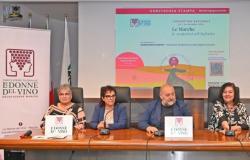Post by Cosimo Verteramo, Life Science & High Tech Division Director of Deerns Group* –
Sustainability, reconversion of thecooling energy And optimization in the’usage of the soil. These are just some of the key aspects that will have to characterize the Data Centers sustainable Of new generation, in response to the new needs that will be imposed byartificial intelligence. A digital revolution which is redefining in an increasingly pervasive way the design approach of the data processing centers of the future, which are required to have an increasingly higher computing capacity, together with a growing processing and storage power for an enormous mass of data and at the same time time to be increasingly efficient and sustainable.
The scenario data reveals that to meet these needs in 2022 they were almost consumed 100 trillion (billion billion) Of gigabytes of data in digital format, equal to 4.5 million times the entire textual content of Wikipedia. A figure destined to double by 2025 based on data emerging from research by International Data Group.
Pervasive connectivity, 5G and AI are driving the growth of the sector
Pervasive fiber connectivity, 5G, the boom in big data and the growing demand for computing capacity linked to the Internet of things (Iot) and Artificial Intelligence (AI) will increasingly act as a driving force for the growth of the data center market, which will go from a total value of 30.4 billion in 2022 to 46.3 billion dollars in 2028, according to what the report reveals “Global data center colocation market – Outlook & forecast 2023-2028” powered by ResearchAndMarkets.com.
IT, Telecom & Health Care among the leading sectors
The growth of the sector is mainly driven by theInformation Technology and of Telecommunications: just think about digital transformation strategies and the adoption of cloud computing by companies. Another leading sector is that ofHealth Care. Health Big Data, which includes clinical, epidemiological, genomic and molecular information available in the databases of healthcare organisations, plays an increasingly important role in the sector.
Use the Health Big Data, enabling a healthcare system to learn from its own information, is the Learning Healthcare System (LHS) approach which allows us to increase the quality and safety of care as well as reduce the costs of the healthcare system. And again: Data Centers are essential for hosting health information management systems (HIS), systems medical imaging, telemedicine applications and other technologies critical to healthcare delivery.
The demand for high-power data centers is growing
From a dimensional point of view, the majority of existing Italian Data Centers today are of medium and small power (10MW) (Hyperscale) represent the area of greatest development on the market today. According to the 2023 development plan published by Terna, it can be observed that the first connection request made in 2013 was for a withdrawal power of 50 MW, in the province of Milan. For the next 7 years the situation remained unchanged until, in 2020, the required power went from 50 MW to 590 MW (+1080%). From 2020 onwards, power demand increases almost exponentially, going from 590 MW to 980 MW (+66%) in 2021 and, finally, to 1.82 GW in December 2022 (+80%). To date, many Hyperscale Data Centers are under construction and, looking at Terna data, many more will be designed and built in the coming years.
L‘impact of AI on the structure of the data centers of the future
Next-generation data centers that will host AI will need to be able to support enormous computing demands, generating a increasingly high heat productionwhich will possibly go recovered And reused in the form of power. But not only. It is estimated that even the electric power and the energy requirements of a Data Center for AI could double up.
Generative AI represents a transformative force with far-reaching implications, which is already having major effects on the data center industry as well. As companies integrate it into their operations, leveraging its capabilities for predictive maintenance, resource allocation optimization and advanced data analytics, the demand for robust data centers capable of supporting the loads of work required by the new scenario.
Transforming Data Center Models with Generative AI (GenAI)
Generative AI requires data management infrastructures with a capacity far greater than that of conventional Clouds. This requires a strategic reevaluation of existing infrastructure to accommodate the evolving landscape of AI technologies and optimize their integration into Data Centers, which can revolutionize their operating models by leveraging AI support to: predict workload patterns , optimize resource allocation, reduce energy consumption and operational expenses, improve sustainability, analyze data center infrastructure for redesign, and optimize layout options.
Generative AI would also enable informed decisions in all areas of development, from site selection and master planning to design development, construction management and operations. The role of generative AI ultimately extends to environmental considerations, such as assessing cooling opportunities and the state of nearby grid infrastructure, as well as exploring options for reusing waste heat in surrounding entities such as farms, fish farms and schools.
AIE: Data Centers consume 1% of global energy
According to the International Energy Agency (IEA), the energy consumption generated by data centers is equal to 1% of global energy – equal to 220-320 TWh/year – and it is estimated that they will consume a fifth of the global energy supply by 2025. However, by implementing a series of wise management choices, even a small data center can save thousands of dollars. The Russian-Ukrainian conflict and its consequences on the international energy market, in this sense, could act as a driving force for accelerating the transition path of the ICT sector and public administration towards renewable sources and energy efficiency.
Among the solutions to optimize the energy consumption of Data Centers, there are for example the software-based Smart Design to improve energy efficiency thanks to solutions capable of managing the greatest workload with the least amount of hardware needed. For example, smart software-based designs and storage solutions can ensure greater energy availability. Additionally, data centers need to identify underutilized pieces of equipment and shut down power.
It is also possible for modern IT tools to operate safely in warmer environments instead of over-cooling the equipment, wasting money and energy. Using thermal sensors and data center infrastructure management software it is possible to raise temperatures safely, ensuring both efficiency and protection of the equipment.
Make full use of virtualization
Virtualization allows data centers to consolidate servers and storage onto a shared platform, maintaining the desired separation between applications, operating systems and data. You can use most applications on virtual machines that share hardware with other applications. This increases hardware utilization and reduces the energy consumption rate, drastically reducing the number of storage devices and servers. This is particularly important because, according to one study, storage and servers represent more than 50% Of energy consumed in a data center. Consolidating hardware and opting for virtualization are great solutions for reducing space, increasing energy and cooling resources in data centers.
Innovative rates
Implement innovative tariffs it’s another way to gain efficiency from the data center. Many companies have already introduced green initiatives to initiate energy-efficient practices among both internal users and external customers. The key is to ensure compliance with the rules by all parties involved. For example, by charging customers fees based on energy consumption, data centers can promote a culture of awareness And responsibility regarding energy efficiency, ensuring better consumption behaviour.
Use airflow management
Implementing airflow management is a crucial energy saving practice. Data centers with raised floors can easily suffer from uncontrolled air leaks, resulting in disproportionate amounts of cold air on IT equipment. This is why energy-efficient data centers must properly seal raised floors and remove unnecessary obstructions in underfloor systems.
Finally, the installation of high-calibre thermal sensors helps the optimization process enormously.
Speaking of Deerns
Founded in 1928, Deerns is a multidisciplinary engineering firm specializing in the design of efficient and sustainable Data Centers as well as professional services to ensure the safe, efficient and environmentally responsible operation of buildings. The multinational has a staff of over 600 professionals and has 17 operational offices in 9 countries. Deerns Italia – turnover of 16 million in 2023 (+30% on 2022) has a staff of over 130 professionals with 2 offices (Milan and Rome) and a track record of over 2,000 projects in the real estate, health care, data centers, electronics, life sciences and airports.






